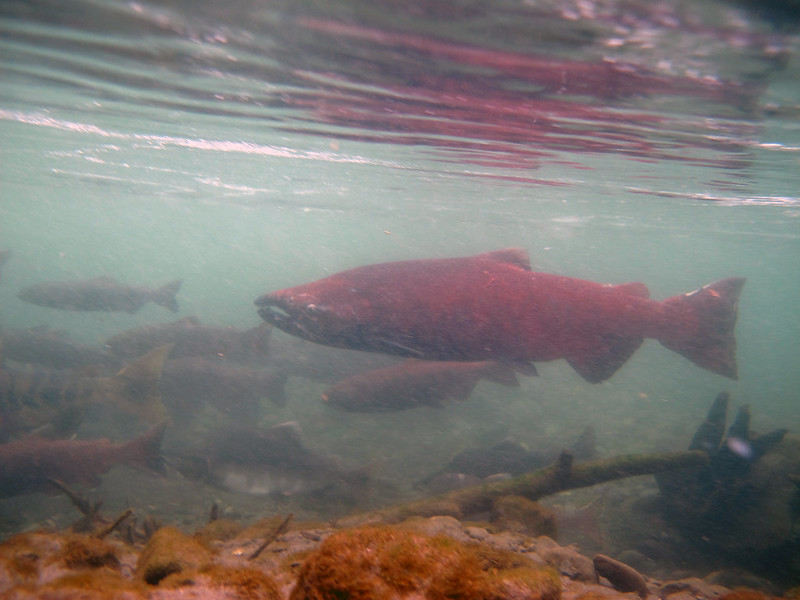New Salmon Strategies Could Reduce Bycatch

Photo: Alaska Region U.S. Fish & Wildlife Service/Flickr
King, or chinook, salmon are facing a lot of trouble in Alaska. Their numbers are low, and fewer truly monstrous kings are being caught than in years past. And of the many potential reasons for this, a lot of folks like to point a finger at the trawling industry in the Bering Sea.
While that’s a topic for another day, there is some interesting new from Evan Erickson at Alaska Public Media that has to do with trawlers and king salmon. Currently, the fleets that trawl the Bering Sea for pollock operate under a cap for how many king salmon they can accidentally catch (what’s called bycatch). According to Erickson, the pollock fleet “has remained within the bounds of the cap currently in place for chinook bycatch [but] researchers are looking at ways to further reduce the number of the fish that get scooped up.”
But a researcher at the University of Alaska wants to help trawlers avoid king salmon as much as possible, so she’s using pop-up satellite archival tags to help gain an understanding of exactly where king salmon move throughout the Bering Sea. This data, if it correlates positively with real-life experience, will help trawl captains better understand how to avoid king salmon bycatch.
You can read more about this potential development here.
Dam Bypass Opens Truckee River for Cutthroat
Fishing for Salmon on the Elwha











